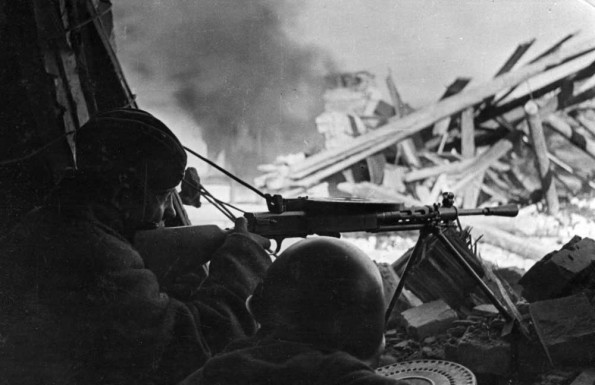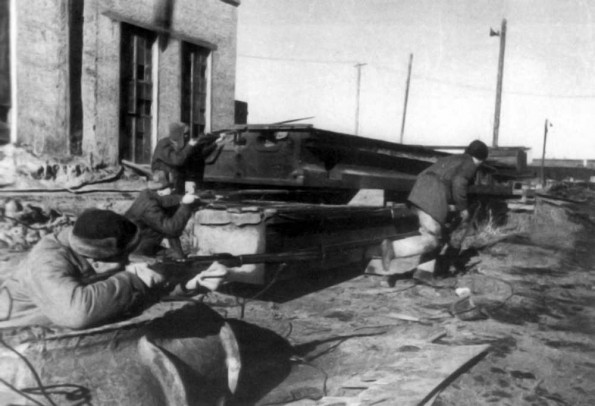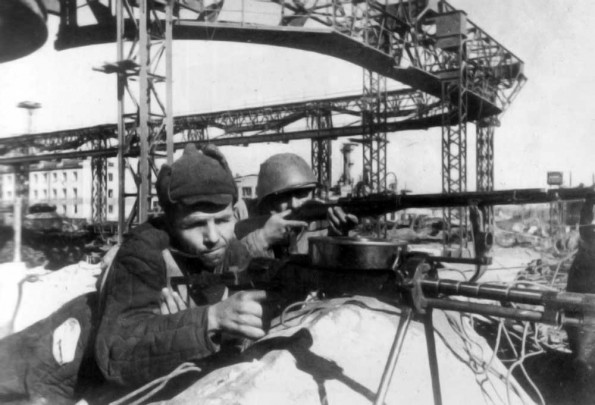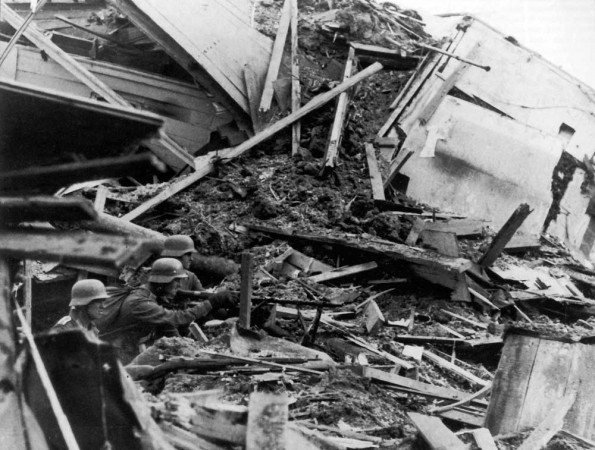Air Operations, Bismarcks
V Bomber Command B-25s attack Luscan Harbor.
[Air Operations, CBI
7th Heavy Bomb Group B-24s based in India stage through the airfield at Chengtu, China attack the coal mines at Lin-hsi. An attempt to flood the mines fails, but heavy damage results from the bombing.
[Air Operations, Egypt
USAMEAF B-25s support RAF bombers in attacking Axis landing grounds behind the El Alamein front.
[Air Operations, Europe
RAF Mustangs strafe barges on the Dortmund-Ems Canal. 8th Air Force B-17s raid the Lorient U-boat base.
BOMBER COMMANDDaylight Ops:
- 3 Mosquitos are sent to Germany, but 2 bomb targets in Holland, a factory in Hengelo and the airfield at Leeuwarden. There are no losses.
- 7 Stirlings and 7 Wellingtons are sent to lay mines off Denmark and in the Frisians, but the Wellingtons are recalled.
- 1 Stirling is lost.
Air Operations, Libya
Bad weather prevents USAMEAF B-24s from locating Benghazi harbor, but German army tent camps and Axis landing grounds near the coast in Egpyt are attacked during the return flight.
[Air Operations, Solomons
7 G4M 'Betty' bombers and 6 A6M Zeros attack Henderson Field on Guadalcanal. VMF-212 F4Fs shoot down 5 Zeros and 2 VF-71 F4Fs down 1 Zero at about 1245 hours. 2 F4Fs are lost in the action.
[CBI
Air Transport Command is established to deliver supplies to China.
[Eastern Front
The focus for the German effort in Stalingrad in now the Barrikady Factory and housing estate. Over the next two days over half of it is taken in a series of vicious engagements. There are German gains in the Red October area.
SOUTHERN SECTORThe German 79th Infantry Division launches strong attacks against the Barrikady and Red October factories. Luftwaffe support aids the attack but the Soviets repel each assault. Minor gains are made in the Red October area as the workers' houses fall.
|
|
|
|
Guadalcanal
The Japanese forces under Gen Masao Maruyama are now 20,000 strong and begin a series of attacks against the American positions. A Japanese coastal force under Gen Sumiyoshi, with artillery support and 9 tanks, attempts to cross to the east bank of the Matanikau but pulls back after losing a tank to US 37-mm and 75-mm fire. The main Japanese units are from the 2nd Inf Div. The plan is for the primary attacks to be delivered northward between the Lunga and Tenaru Rivers while secondary attacks are to be made on the western outposts along the Matanikau River. Japanese Intelligence has little information on the strength and dispositions of the US forces. When this shortcoming is added to the difficulties of the inland approach march for the main attacks, the whole Japanese effort proves to be badly planned and badly coordinated.
Adm Kusaka's 11th Air Fleet sends the noon raid from Rabaul. There are 7 Bettys escorted by 20 fighters. 6 fighters are shot down, AA fire gets 1 of the bombers. 2 American planes lost. P-400s are sent on ground strafing missions along the Matanikau River to try to eliminate some of the gunfire.
In Washington, Adm King gets some new assignments which include 2 groups of heavy bombers, 70 planes; 2 groups of army fighters, 150 planes; 1 group of medium bombers, 52 planes and 5 squadrons of patrol bombers, 60 planes; plus about 1,000 navy planes. All are assigned to the Pacific area. These new planes will not begin arriving, however, until the next month.
[ Curtiss P-40 'Rose Marie' |
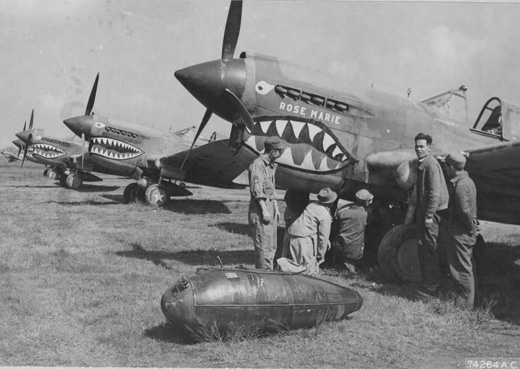 |
New Guinea
From Jaure, a 50-man patrol of Cannon Company, US 32nd Division, sets out for the Kumusi River Valley, where it subsequently establishes a defense line and is joined by Medendorp's main group, the entire force being called the Wairopi Patrol. The Australian troops fighting their way along the Kokoda trail have succeeded in closing up to the main Japanese positions at Eora. MacArthur issues orders trying to speed their progress.
[Operation TORCH
Over the next 10 days although 21 U-Boats are operating off Gibraltar and the Moroccan coast, they are engaged with the convoy SL-125 and do not sight any of the transports which are now en route. There are occasional sightings of some of the warship groups bound for North Africa, but they are sufficiently vague and scattered to prevent the Germans and Italians making a correct appreciation of the situations.
Maj-Gen Mark W. Clark, the deputy commander of Allied forces for Operation TORCH, Brig-Gen Lyman M. Lemnitzer, two other army officers, and Capt Jerauld Wright (USN) are landed at Cherchel, French North Africa, from the Briiish submarine Seraph to meet with a French military delegation and ascertain French attitudes toward impending Allied operations. Maj-Gen Charles Mast, a pro-Allied commander of the Algiers Division of Vichy French forces in North Africa, and US Consul General Robert Murphy meet the officers. Mast states that with four days notice he can neutralize French resistance to the Allied landings. The meeting is twice interrupted by suspicious police, forcing Clark and others to hide in the wine cellar. The group returns to the submarine shortly before dawn.
[Pacific
- The US submarine Guardfish (SS-217) sinks the Japanese merchant cargo ship Nichiho Maru (6363t) about 120 miles north-northeast of Formosa.
- The US submarine Gudgeon (SS-212), attacking a Japanese convoy in the Bismarck Sea, sinks the transport Choko Maru (6783t) about 120 west-northwest of Rabaul.
United States, Home Front
Roosevelt signs a $9 billion tax bill, the largest in US history.
[